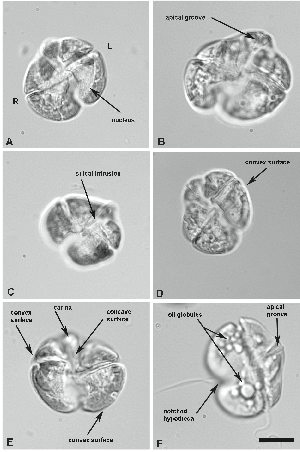Adaptation
Karenia brevis cells are basically squares with rounded edges that have an apical groove (look at picture B). They are flattened considerably to increase their surface area for photosynthesis. They have a complex dorsal side and a concave ventral side. Their cingulum is a little displaced and the sulcus extends into the epicon. They also have an apical groove that extends from the sulcus across the apical protrusion and onto the dorsal side of the cell. On the inside of this organism they have a spherical nucleus and a number of yellow-green chloroplasts. In addition, it is noted that the rear flagellum is usually the length of the cell.

Florida Fish and Wildlife Commission (FWC)
Karenia brevis has two whip-like flagella used to move
through the water at a rate of one meter per hour. These organisms have
a nucleus, several chloroplasts, and other membrane bound
organelles. Off the cost of Florida these HABs thrive in
high-salinity areas, but are able to survive in a wide of
salinities. A good marker as to what temperature these blooms
thrive in is by the temperatures in the Gulf of Mexico.
Find out how K. brevis gets its nutrition or you can go home.
